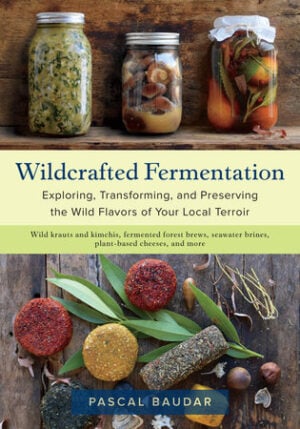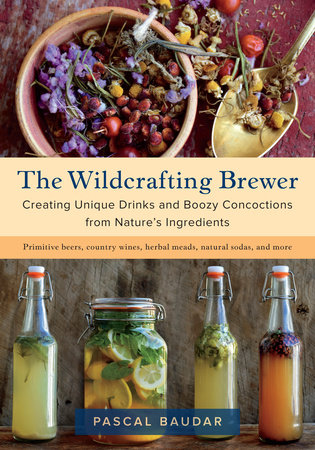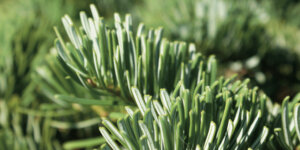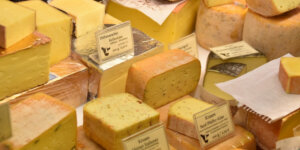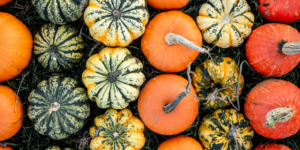Wild Spicy Forest Paste
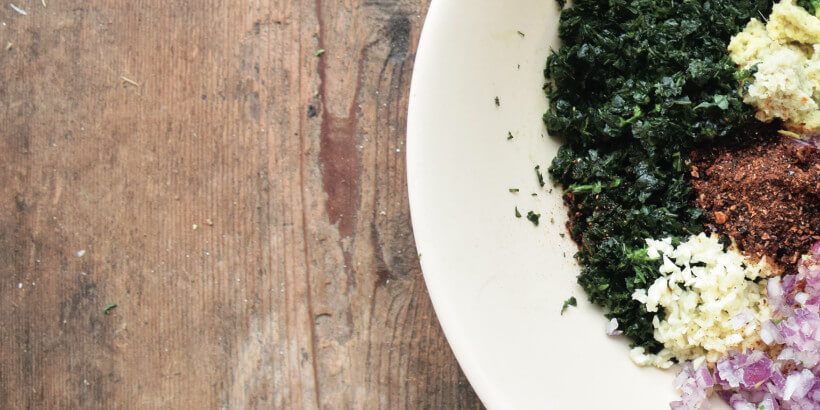
In his new book Wildcrafted Fermentation, professional forager Pascal Baudar combines his curiosity, research, and in-depth understanding of terroir to explore new and surprising uses for wild ingredients through fermentation.
The following is an excerpt from the Chelsea Green Spring 2020 Seasonal Journal. It has been adapted for the web
Springtime offers an abundance of delicious and tender wild greens such as chickweed, miner’s lettuce, wild chervil, tender young grass (foxtail), watercress, bitter cress, and countless others. Eating a freshly foraged salad is truly an epiphany of green flavors in your mouth: earthy, a punch of chlorophyll, grassy, the perfect balance of sweet and bitter. You cannot even approach those flavors with ingredients purchased at the store. And they can be preserved for use year-round in the form of pastes.
Spicy Forest Paste
I usually serve this paste on top of my acorn and wild seeds crackers, but it will work nicely on eggs, grilled steaks, and even fish. If your diet is plant-based, I would spread the paste on vegan pizza or simply use it as a savory side condiment.
Ingredients
Makes a ½-pint jar (236 ml)
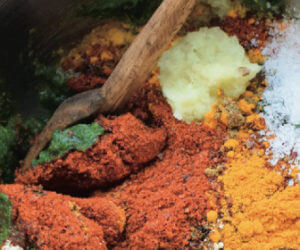
Image from Wildcrafted Fermentation
- 2 large jalapeño peppers, seeds removed, cut into large pieces
- 2 ½ cups (75 g) minced forest herbs (I use 60 percent chickweed, 20 percent chervil, 10 percent miner’s lettuce,10 percent others)
- 1 cup (30 g) lemon basil
- 1 cup (30 g) cilantro
- 7 garlic cloves, peeled
- 2 tablespoons (30 ml) Culture Starter
- 4½ tablespoons (27 g) paprika
- 2 tablespoons (15 g) Korean chili flakes
- ¾ teaspoon (2 g) ground coriander
- 1 teaspoon (2.5 g) chile morita or spicy chili flakes
- ¾ teaspoon (1 g) ground cumin
- 2 teaspoons (4 g) ginger powder or 1 tablespoon (5 g) grated fresh ginger root
- 1 teaspoon (3 g) garlic powder
- ½ teaspoon (1.5 g) ground black peppercorns
- 1 teaspoon (2 g) turmeric
- Salt
Procedure
- Process the jalapeños, forest herbs, lemon basil, cilantro, garlic, and starter in a blender until you get a smooth paste.
- Place this in a bowl, and add the spices, stirring to combine.
- Mix the salt with the paste and transfer to a jar.
- Close the lid and stir the ferment a couple of times daily until the fermentation gases subside, usually 7 to 10 days. You’ll need to burp as necessary.
Recommended Reads
Recent Articles
The scent of fir trees is a holiday staple 🎄 Imagine sipping a festive cocktail infused with the unmistakable taste of fir ✨ This holiday season, elevate your entertaining game by introducing fir to your menu – from classy cocktails to rustic potatoes!
Read MoreLooking for a way to use that leftover Thanksgiving Turkey? Shake things up this holiday season with a game-changing twist. Serve these easy-to-make appetizers with a side of Vietnamese dipping sauce for an extra kick of flavor!
Read MoreAttention all cheese lovers! If you’re looking for recipes to satisfy all your cheesy needs, then look no further.
Read MorePumpkins: Halloween symbol or sweet treat? But have you ever wondered how they became a holiday staple? Discover the rich history behind this fall favorite!
Read More

